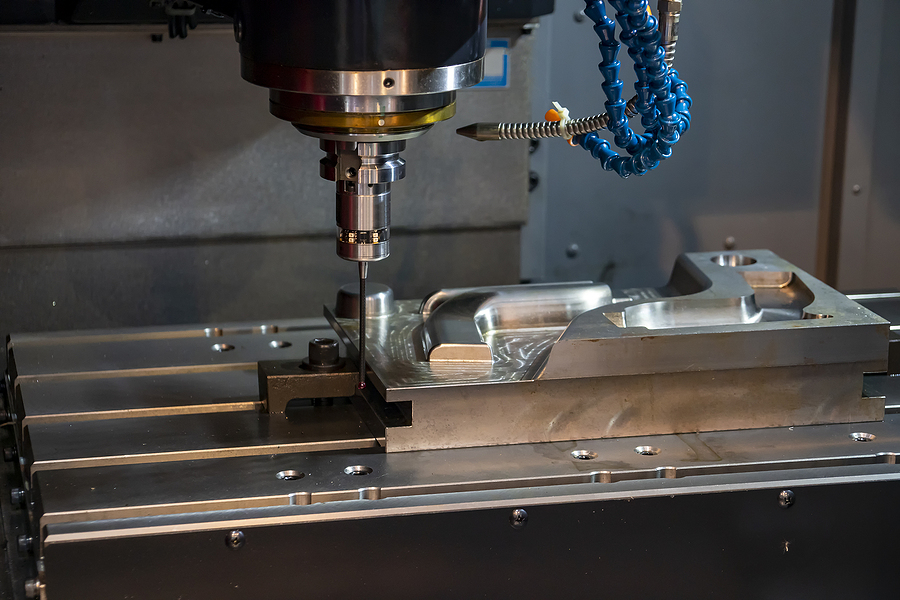How to include fail-safes in your injection molded product to save costs by reducing production errors
There is a lot at stake when designing parts for the injection molding process. Yes, the cost per production unit is considerably lower than any other method but the design and mold tooling is about 70% to 80% of the initial investment and should be kept to a minimum to recoup costs. If there are multiple redesigns and retooling modifications, it will take longer to make a profit.
Heeding to design fail-safes in your injection molding product will optimize the handoff of the final design to production with few or no changes.
Part Defects Caused By Design Errors
- Sink marks: When the inside of the part solidifies before the outside, a small depression on the flat surface can occur.
- Warping: When certain sections of the part cool faster than others, the part can bend because of internal stresses.
- Drag Marks: During ejection of the part from the mold, sliding and scraping marks can appear on the part because of the pressure of the part against the mold.
Design Fail-safes To Minimize Costly Redesign And Retooling
-
Partner with a molder early in the design process.
-
Designer skill:
The designer should be knowledgeable about all the fundamental design parameters associated with injection molding and should be highly skilled in the art.
-
Material Options:
There are common materials used in the injection molding process, but there must be an understanding of what applications are the best use of these materials.
- Polypropylene (PP): Chemical resistant; food-safe grades available; not suitable for mechanical applications.
- ABS: High impact resistant and low cost.
- Polyethylene (PE): Good impact strength and weather resistant.
- Polystyrene (PS): Lowest cost; food-safe grades available; not suitable for mechanical applications;
-
Critical tolerances of wall thicknesses.
Use a constant wall thickness and avoid thick sections, since non-uniformed walls can lead to warping.
- (PP): Recommended wall thickness 0.03” — 0.15”
- ABS: Recommended wall thickness 0.045” — 0.14”
- (PE): Recommended wall thickness 0.03” — 0.12”
- (PS): Recommended wall thickness 0.04” — 0.155”
-
Hollow out thick sections:
- Thick sections can lead to warping or sinking.
- Limiting the wall thickness to the recommended values, by hollowing sections, can limit defects.
- Use ribs to design structures of equal strength and stiffness but reduce wall thickness.
-
Add smooth transitions.
- When using different wall thicknesses, use a chamfer or fillet to make a smooth transition between the wall thickness.
- Recommended 3 × wall thickness difference
-
Round all edges.
- For interior edges, use a radius of at least 0.5 x the wall thickness.
- For exterior edges, add a radius equal to the interior radius plus the wall thickness. This way you ensure that the thickness of the walls is constant everywhere (even at the corners).
-
Add draft angles.
- To make the ejection of a part from the mold easier and to avoid damage, add draft angles to the vertical walls of the part.
- We recommend a minimum draft angle of 2°.
- However, taller features should include larger draft angles (up to 5o°).
-
Undercuts:
- Undercuts, such as teeth for threading or a hook of a snap-fit joint, are difficult to deal with in a straight-pull mold because these design features can either get in the way when trying to eject a part or the mold cannot even be constructed with the undercut feature.
- If possible, avoid undercuts.
- However, if an undercut cannot be avoided, the material surface underneath the undercut can be removed.
- Another way to deal with an undercut design is to move the parting line to intersect with the exterior surface of the undercut and adjust the draft angles.
-
Use a stripping undercut or bump offs.
- This means a flexible undercut feature which can expand or deform over the mold during the ejection without breaking or bending.
- This undercut feature must have space away from any corners and ribs on the part.
- The undercut must have a lead angle of 30 to 45 degrees.
Contact us for any questions about fail-safes or design guidance for your injection molded product.
